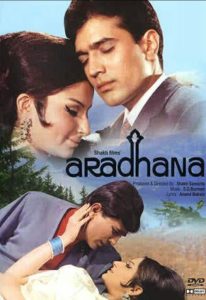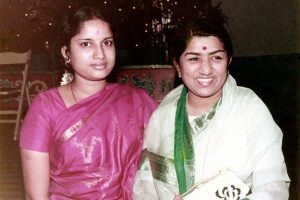
Lata Mangeshkar 'a true legend', 'was all steel beneath her lovely silk sarees'

The late legendary singer Lata Mangeshkar, who ruled over Bollywood for nearly three quarters of a century, was always stumped for an answer when she was asked the secret of her success. But she did say, if she had not been a singer or taken up any other field, she would still have been ‘a Lata Mangeshkar’.
Besides her prodigious talent, with some of her solos and immortal duets with Mohammed Rafi, Kishore Kumar and Mukesh being Hindi cinema’s most memorable songs, the singer comes across as a strong-willed, highly-focused professional from the books written on her. Her biographer, Harish Bhimani, India’s most famous radio announcer, told The Federal that she always loathed the question – what was the secret of her phenomenal success?
Bhimani, who wrote In Search of Lata Mangeshkar, said, “I used to ask her that question and she would reply, I don’t know how to answer that – meri safaltha ka raaz kya hai? (what is the secret of my success?) She used to say, all I know is that once you decided you want to get a thing, you go after it with a complete focus. How can you not achieve something if you do it with singular focus? Besides her determination never to lose focus, she felt that you need to believe that you deserve to reach your goal and work hard tirelessly.”
 She had talent but she also worked hard to retain her No 1 position in the Indian film industry. For lovers of Hindi film music over generations, Lata was the voice of Sharmila Tagore singing ‘Kora Kagaz Tha Yeh Man Mera’ in Aradhana or of a bride (Raakhee) singing the haunting ‘Kabhie Kabhie Mere Dil Mein’ on her wedding night, thinking of her lover or the impish Jaya Bhaduri’s enticingly singing ‘Bahon Mein Chale Aao’ to a shy Sanjeev Kumar in Anamika and Hema Malini waiting for her lover with the melodious ‘Ae-Dil-E Nadaan’.
She had talent but she also worked hard to retain her No 1 position in the Indian film industry. For lovers of Hindi film music over generations, Lata was the voice of Sharmila Tagore singing ‘Kora Kagaz Tha Yeh Man Mera’ in Aradhana or of a bride (Raakhee) singing the haunting ‘Kabhie Kabhie Mere Dil Mein’ on her wedding night, thinking of her lover or the impish Jaya Bhaduri’s enticingly singing ‘Bahon Mein Chale Aao’ to a shy Sanjeev Kumar in Anamika and Hema Malini waiting for her lover with the melodious ‘Ae-Dil-E Nadaan’.
And much later on in the 90s, Lata gave her voice to actress Kajol in the chirpy number ‘Mere Khwabon Mein Jo Aaye’ in the 1995 blockbuster film Dilwale Dulhania Le Jayenge.
 It does seem amazing that this same singer had also sung the rebellious love song – ‘Jab Pyar Kiya To Darna Kya’ for the beautiful Madhubala back in the 60s in the classic Mughal-e-Azam. Or those unforgettable numbers in Dev Anand’s 1965 Guide like Gaata Rahe Mera Dil.
It does seem amazing that this same singer had also sung the rebellious love song – ‘Jab Pyar Kiya To Darna Kya’ for the beautiful Madhubala back in the 60s in the classic Mughal-e-Azam. Or those unforgettable numbers in Dev Anand’s 1965 Guide like Gaata Rahe Mera Dil.
Also Read: When Lata worked with Ilayaraaja, SPB for popular Tamil numbers

Speaking to The Federal, Vani Jairam, a famous singer in her own right said, “I am very upset about her death. I have grown up listening to Lataji’s beautiful songs and she was a huge inspiration to many singers like me. Her going away is a huge, huge loss to the entire world of music. Lataji is greatly admired not just all over India but is popular all over the world. There can never be another Lata Mangeshkar, she was a true legend.”
It is difficult to pick a favourite from the huge repertoire of songs that she has sung – 30,000 to be precise. But Vani Jairam has her favourites.
 “I loved ‘O Sajana Barkha Bahar Aayee’ from Parakh (1960) and the classic ‘Jab Pyaar Kiya To Darna Kya’ in Mughal-E-Azam. Every song was a gem, whatever she sung. I remember them all,” she said. The singer fondly remembers singing all the songs of Lata during her college functions at Queen Mary’s College in Madras.
“I loved ‘O Sajana Barkha Bahar Aayee’ from Parakh (1960) and the classic ‘Jab Pyaar Kiya To Darna Kya’ in Mughal-E-Azam. Every song was a gem, whatever she sung. I remember them all,” she said. The singer fondly remembers singing all the songs of Lata during her college functions at Queen Mary’s College in Madras.
Woman of steel
In Harish Bhimani biography In Search of Lata, he captured her as a very “firm individual. All steel beneath her lovely, rustling silks and half-smile.” The author has a 14-year-long “concert association” with Lata, one which took them “through 21 countries, 53 cities and 123 shows”. He also describes her as an autocratic person: cancelling sightseeing tours for her entourage and ensuring with a sharp vigil that no one in her troupe even looked at alcohol.
Lata comes across as a determined lady in the book. She would not budge an inch over royalty rights and refused to sing for Raj Kapoor for many years because of this. Lata reportedly also refused to sing when Shankar-Jaikishan were to be given awards for their music for the film Chori Chori, until playback singers were also included in the awards and they were, the following year in 1958.
Lata also loved cars and bought her first car, a Hill-man, when she was 18.
On Lataji’s death on Sunday (February 6), Harish told The Federal, “For those who knows the names of the notes, the notes could be called ‘do re mi fa so Lata.’ Popular music can be divided into two eras: before Lata and the Lata era. Today is the darkest day of the Lata era.”

He had a memory of Lataji at a concert in Auckland, New Zealand, where she sang the beautiful bhajan, Vaishnav Jana, which she was very fond of and which was considered to be Mahatma Gandhi’s favourite as well.
“I was standing in the wings, when a person slunk in from the audience on stage at the indoor concert, and took out some currency notes and did aarti and placed the note at her feet. Three others followed and she got offended. In the part of India from south of Madhya Pradesh, where we came from, this kind of ritual is not considered good. Some don’t see this ritual as carrying any negative connotation, but we somehow tided over the awkward moment when she said that you have left Goddess Lakshmi at my feet, while I am singing a song for Lord Vishnu.”
The author of Lata Mangeshkar: A Biography and best-seller A Journey Down Melody Lane, the late Raju Bharatan had said that Lata was brilliant but she was the voice of the meek heroine in white. “Even the romance of those days needed the heroine to be coy. Lata’s vocal image was perfect for that,” he said in interviews.
As films began reflecting a changing India, composers like RD Burman began creating cabaret songs and women who were more free and followed their own voice. They were no longer confined to the four walls of the house and Lata’s sister, Asha sang that with much aplomb. To the generation of the 1970s and 1980s, Asha was a superior singer, even more versatile. The heroines she sang for were expressive and spoke their mind.
Bharatan has written reams on the infamous rivalry between the two sisters Asha Bhosle and Lata Mangeshkar.
“Lata and Asha grew up in the same house, just three years apart, and were competitive even as kids. When Lata found attention and popularity, displacing every female singer in the music industry, Asha wanted to do the same. In the 1950s and ’60s, Lata charged ₹500 for a song, unheard of in the industry, while Asha had to settle for ₹100-150. While Lata chose what to sing or whom to sing for, Asha did not have that luxury, “ said Bharatan and it “rankled” for Asha. As did the fact that whenever Asha performed live, Lata never attended her shows.
“The lack of encouragement and musical support from an older sister turned matters worse. Asha took it upon herself to prove herself,” pointed out Bharatan. There was even a movie made on their rivalry, Sai Paranjpye’s Saaz, in which Shabana Azmi played the role of Asha Bhonsle, while Aruna Irani was Lata. But, despite all the allegations of how Lataji squashed competition and had a bad relationship with her sister, the singer went on to carve a niche for herself in the Indian music industry with her golden voice, which brought her fame and awards like India’s biggest honour: the Bharat Ratna.

